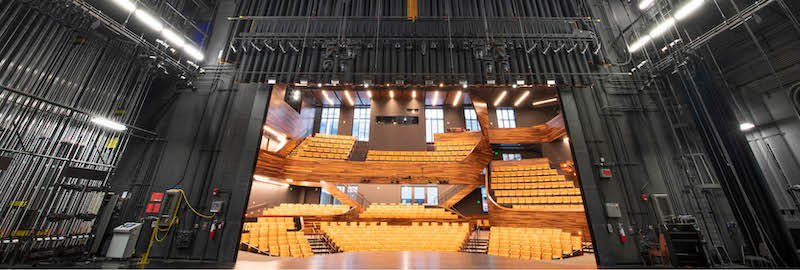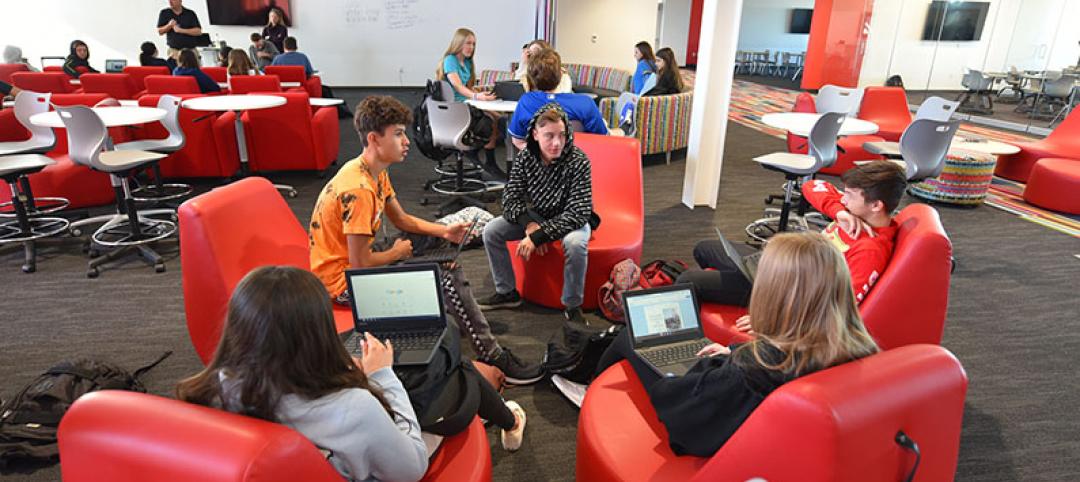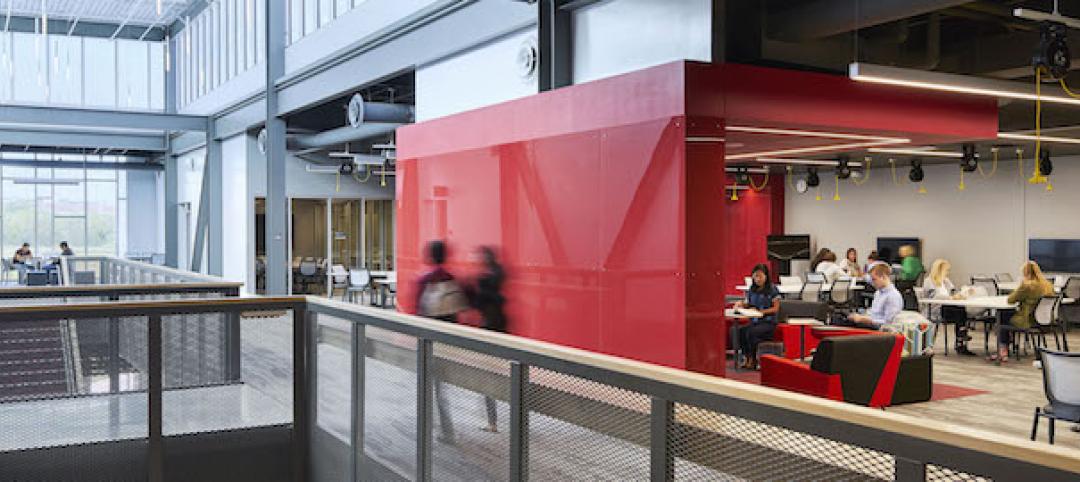As institutions develop plans to reactivate their campuses in meaningful ways, they must consider specialized academic units that require deliberate face-to-face and hands-on learning to accomplish proficiency in academic training. Performing arts disciplines, specifically theatrical arts, are highly specialized areas of study that have in-person needs for a large part of the curriculum. Without access to traditional forms of teaching and learning, there will be a significant impact on successful outcomes for these future practitioners.
The theater craft is learned through a variety of settings, from the classroom with an open floor space used for movement, acting, or stage combat classes, to the scenic, prop, paint, and costume shops; rehearsal halls; and even the theater itself outside of public performances. Live productions, which offer students the opportunity to hone their skills with true audience feedback, currently pose health risks for students and faculty.
University of Nevada, Reno University Arts Building in Reno, Nevada by DLR Group. Photo by David Huff
Colleges and universities lean heavily on arts educators and their creative skills for guidance to accommodate new modalities of teaching these experiences in the safest manner possible. While the reopening of performance venues can be accomplished by following guidelines such as DLR Group’s Pathways to (Re)Opening Night, the firm is also partnering with institutions to create strategies for other academic areas within campus arts communities to reopen safely.
Performer-based classrooms present the challenge of necessary proximity to people while rehearsing a play or practicing stage combat, for example. Some institutions are exploring the bubble concept for students in particular fields of study, such as theater arts. This approach can limit student interaction within single or adjacent housing units, on or off campus, in an attempt to mitigate students contracting the virus while participating in activities unrelated to their major.
Point Park University Pittsburgh Playhouse and Academic Complex in Pittsburgh, Pennsylvania by DLR Group. Photo by Kevin G. Reeves.
Integrated Technology Tools in the Arts
The integration of technology will serve as a benefit for students seeking careers in the arts. Theater productions increasingly rely on projection mapping, augmented reality, and digital tools, and students who master these technologies better position themselves for careers in the industry.
Looking at the gaming industry for opportunities, platforms such as Unity offer the experience to create entire shows executed in 2D or 3D environments. Think about the avatar concept. Directing students can block avatar actors that are costumed by costume design students. These avatars come to life in a virtual world created by scenic and lighting designers. Sound design students add spatial audio soundscapes. Music is composed and tweaked in real time along with show-controlled scenic movements, lighting, and sound cues. Scenic artists digitally paint the scenery, and technical students design the structures, lighting rigs, and sound systems in software. All these activities could be completed remotely and later transformed to a live production.
Innovative use of technologies, such as 360-degree cameras placed in key locations and leveraging augmented and virtual reality, projection mapping, and holographic projection systems, can be used to bring students together, even in a remote or hybrid model. Instruction in safe tool use for the building of props and scenery, theatrical rigging, scenic painting, costume construction, or installation of theatrical lighting requires hands-on activities, and can be accomplished by limiting the number of students in each of these classes, using personal protective equipment, and social distancing within shop spaces. However, this level of hands-on work requires more course sessions with additional faculty or staff, which can increase the academic load of some instructors.
The options mentioned above are just some examples of creatively managing an academic unit’s success while keeping faculty, students, and staff healthy and safe. Institutional commitment to facilitate these and other strategies is paramount to theater arts students’ success. Faculty and staff within the academic units should coordinate with their deans and instructional technology departments to assess software and hardware needs along with IT network capabilities and requirements. Faculty will need time to become familiar with the software and hardware to accomplish their learning objectives, and a dedicated helpline should be made available for faculty and students to trouble shoot errors.
Clear technology minimum specifications should be conveyed to students to make sure they are compatible with the software being used. How this technology is deployed for student use should also be considered. Will the student be required to provide their own resources or will the department or university provide it and who will maintain it? One strategy is to look for cross disciplinary collaborations with other academic units such as game design or graphic design to leverage assets that may exist on campus already, and either co-teach or alternate times of use. These, along with other methods can make this a smoother process and still maintain proficiency for students in their field of study.
More from Author
DLR Group | Oct 30, 2024
Reasons to reinvent the Midcentury academic library
DLR Group's Interior Design Leader Gretchen Holy, Assoc. IIDA, shares the idea that a designer's responsibility to embrace a library’s history, respect its past, and create an environment that will serve student populations for the next 100 years.
DLR Group | Jan 8, 2024
DLR Group adds executive leaders
DLR Group Chief Executive Officer Steven McKay, AIA, RIBA, announced new executive leaders for the 100% employee-owned, globally integrated design firm.
DLR Group | Nov 30, 2023
A lasting housing impact: Gen-Z redefines multifamily living
Nathan Casteel, Design Leader, DLR Group, details what sets an apartment community apart for younger generations.
DLR Group | Nov 6, 2023
DLR Group opens office in Nashville, Tenn.
DLR Group is expanding its presence in the Southeast with the opening of an office in downtown Nashville, Tenn.—a collaborative effort led by DLR Group Principals Matthew Gulsvig, AIA, LEED AP, and Randall Coy.
DLR Group | Jan 27, 2021
Selecting indoor air quality monitors to maintain healthy spaces
In searching for an indoor air quality monitor, most devices will measure a combination of temperature, relative humidity, carbon dioxide, particulate matter, and total volatile organic compounds.
DLR Group | Sep 1, 2020
The rise of inquiry-based learning in K-12 communities
Inquiry-based education offers a methodology that does not rely solely on the educator being the lead in all learning.
DLR Group | Jun 11, 2019
The power and possibility of adaptive reuse
Building reuse generally offers greater environmental savings than demolition or new construction.
DLR Group | Apr 29, 2019
A look ahead to learning in 2050
Fast forward to the year 2050 and beyond, and imagine what education looks like.
DLR Group | Aug 31, 2018
The building data analytics revolution in three acts
Increased transparency of operational building data is impacting accountability.
DLR Group | Jul 2, 2018
Data, Dynamo, and design iteration
We’re well into the digital era of architecture which favors processes that have a better innovation cycle.
















